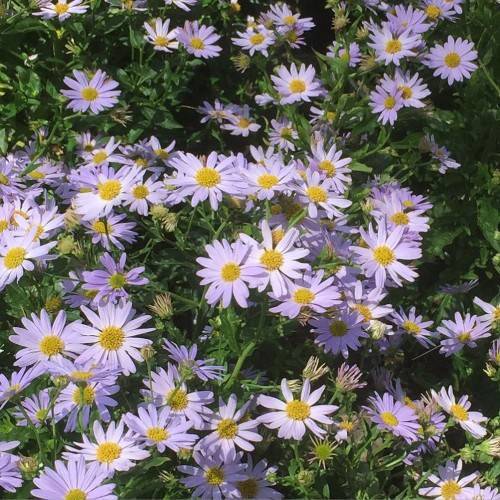
kalimeris
Kalimeris incisa 'Blue Star'
Cycle:
Herbaceous Perennial
Watering:
Average
Hardiness Zone:
5 - 9
Flowers:
Flowers
Sun:
Full sun,part shade
Leaf:
Yes
Growth Rate:
Low
Maintenance:
Low
Drought Tolerant:
Yes
Salt Tolerant:
Yes
Care Level:
Moderate
watering
Kalimeris incisa 'Blue Star' requires moderate to regular watering depending on the weather. During hot and/or dry periods, water every 1-2 weeks, making sure to saturate the soil completely when doing so. During cooler and/or wet periods, water every 3-4 weeks as needed—allowing the soil to dry slightly between watering. Water the plant's root zone instead of the foliage to avoid disease issues. In cold climates, it is important to ensure that the ground doesn't freeze, so apply enough water to avoid this issue.
sunlight
Kalimeris incisa 'Blue Star' is a deciduous plant native to Japan, and it is recommended to be grown in areas that receive at least 6-8 hours of strong, direct sunlight each day. This plant prefers full sunlight in the summer as well as some shade during the hottest part of the day. If planting in a sunny area, light should be filtered through trees or a trellis to help protect the plant from the direct heat of the sun. In winter, when days are shorter and weaker sunlight is available, Kalimeris incisa still needs several hours of sun each day. If planted in a shady area, the amount of sunlight might need to be supplemented by using artificial light to ensure the plants are getting the light energy they need.
pruning
Kalimeris incisa 'Blue Star' should be pruned twice a year, once in early spring before bud break and then again in mid to late fall after the flowering period has ended. Pruning in early spring should involve cutting back the plant to reduce the size and to stimulate new growth. In mid to late fall pruning should involve trimming off dead or diseased branches and flowers to promote a healthier plant. Pruning should be done sparingly, as it can be damaging to the overall health of the plant. It is best to remove no more than 20-30 percent of the plant material when pruning. Pruning should also be done with sharp, sterilized tools to avoid any further infection.
